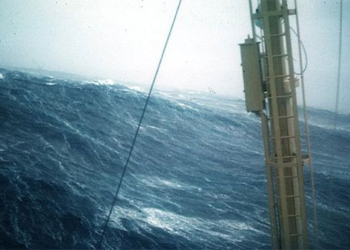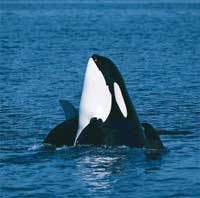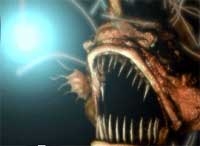The Giant Antarctic Sea Spider Has Unique Biological Characteristics Compared to Common Sea Spiders, with a Distinctive Method of Reproduction and Egg Care.
The icy waters of Antarctica conceal a mysterious ecosystem. There, with their spindly, tiny legs, strange sea spiders traverse the ocean floor in search of nesting sites.
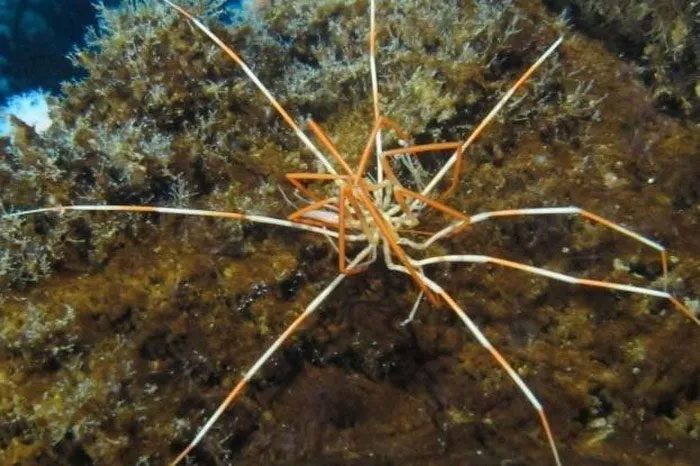
The Giant Antarctic Sea Spider has long legs that can reach up to 70 cm. (Photo: R. Robbins).
For many years, scientists have been trying to understand how the Giant Antarctic Sea Spider (Colossendeis megalonyx) reproduces. Recently, researchers have uncovered answers and published their findings in the journal Ecology this past March.
Called Sea Spiders, But Not Actually Spiders
Marine ecologist Amy Moran at the University of Hawaii (USA), a member of the research team, stated that most common sea spiders care for their young by carrying them around during their development.
This species is found everywhere, inhabiting various environments around the world, from deep waters to shallow ones, and across a range of salinity and temperature.
Compared to other animal species, our understanding of sea spiders remains quite limited. However, their reproductive characteristics are relatively clear.
Specifically, after a pair of sea spiders decides to mate, the male climbs onto the female and arranges the genital openings on his legs in alignment. The female then releases eggs for external fertilization by the male. Subsequently, the male hides the fertilized eggs in his special legs known as ovigers for incubation and care.

The Giant Antarctic Sea Spider is an arachnid. (Photo: S. Rupp).
However, for the Giant Antarctic Sea Spider, no one has ever observed how it gives birth and cares for its young, even though scientific studies on this species date back 140 years.
Despite being called a sea spider, the Giant Antarctic Sea Spider is neither a true spider nor a crustacean like a horseshoe crab. It is a marine arthropod classified in a separate group known as pantopods.
Strange Parenting Methods
In 2021, Amy Moran and her colleagues traveled to Antarctica to conduct research on a phenomenon known as “gigantism in polar regions.” This phenomenon refers to many species living in polar areas being significantly larger than their relatives elsewhere.
Sea spiders are no exception. Typically, sea spiders are no larger than a fingernail. However, in polar regions, their leg spans can reach up to 70 cm.
While diving beneath the ice in McMurdo Sound, some team members encountered Giant Antarctic Sea Spiders mating. They gently moved these creatures into an observation tank to study their reproductive processes.
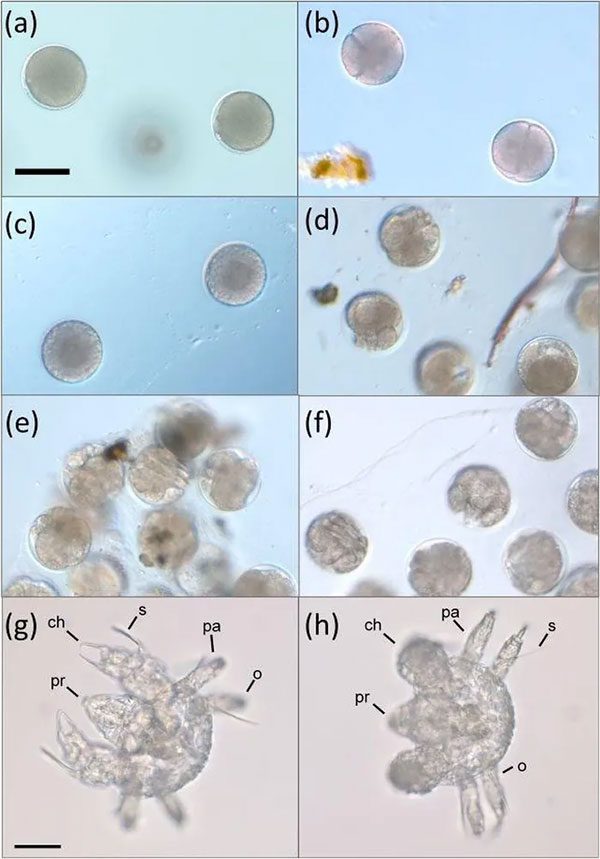
Eggs and larvae of the Giant Antarctic Sea Spider at various stages from incubation to hatching. (Photo: Moran).
Through observing two groups of spiders during the breeding season, the research team discovered that this species could produce thousands of eggs and place them around a single spider.
A male spider would take these eggs and carefully “adhere” them to the bottom of the tank. There, the eggs would develop for several months before hatching into spider larvae. It takes up to 8 months after laying for the larvae to emerge.
After observing in the tank, the research team repeatedly found similar clusters of eggs surrounding adult sea spiders in their natural habitat.
From this, the team concluded that the Giant Antarctic Sea Spider has a different reproductive method compared to other sea spiders. Instead of hiding eggs in their ovigers, this species conceals eggs among rocks on the ocean floor for nurturing.
The length of the incubation period remains a mystery, not only for the Giant Antarctic Sea Spider but also for some other sea spider species.
To date, scientists still do not understand why the Giant Antarctic Sea Spider does not incubate eggs like other sea spider species. They speculate that the incubation period might relate to this behavior.
When incubating eggs in the natural environment, the Giant Antarctic Sea Spider hides the eggs under a layer of seaweed for several weeks. This could also explain why no one has ever found eggs of this species.
Furthermore, hiding eggs under seaweed may be a safer option. The reason is that the legs of the Giant Antarctic Sea Spider are weaker than those of other sea spider species. If the egg clusters were placed on the father’s legs, they would not be safe.








































